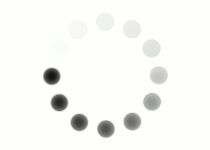The changing political atmosphere prior to World War II halted the growth of the Expressionist art movement. The political powers of the time used graphic design to help further their interests and created art work designed to rally their citizens around the war effort. Whether it was sincere or propaganda, the main focus was the same: to quickly deliver an emotionally charged message.
Heroic Realism used many of the design principles of the classic art movements to develop a common style. Realistic figures were used to inspire or intimidate the viewers. Whether the viewers were able to read the content of the designs or not, they would still be able to see the emotions expressed by the bold stances of the figures in the designs. Bold typography and contrasting colors were used to ensure that the designs grabbed the attention of the people.
The emotionally charged designs of Heroic Realism served all sides during the war to motivate their citizens. After World War II, the interest in such dynamic designs wasn’t necessary and the style began to fade.



